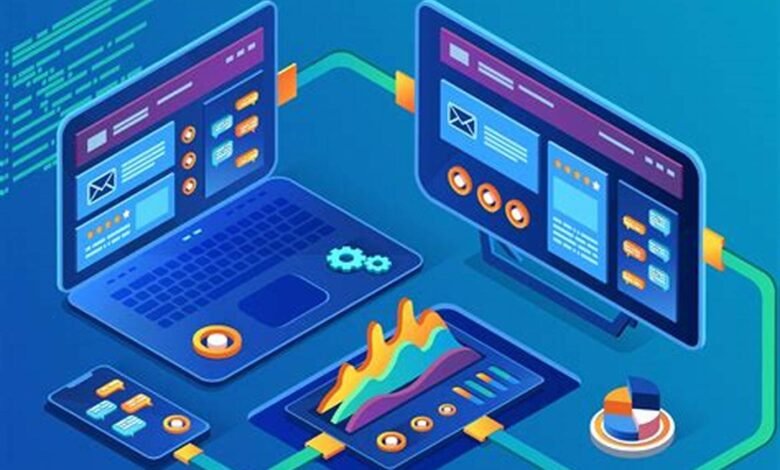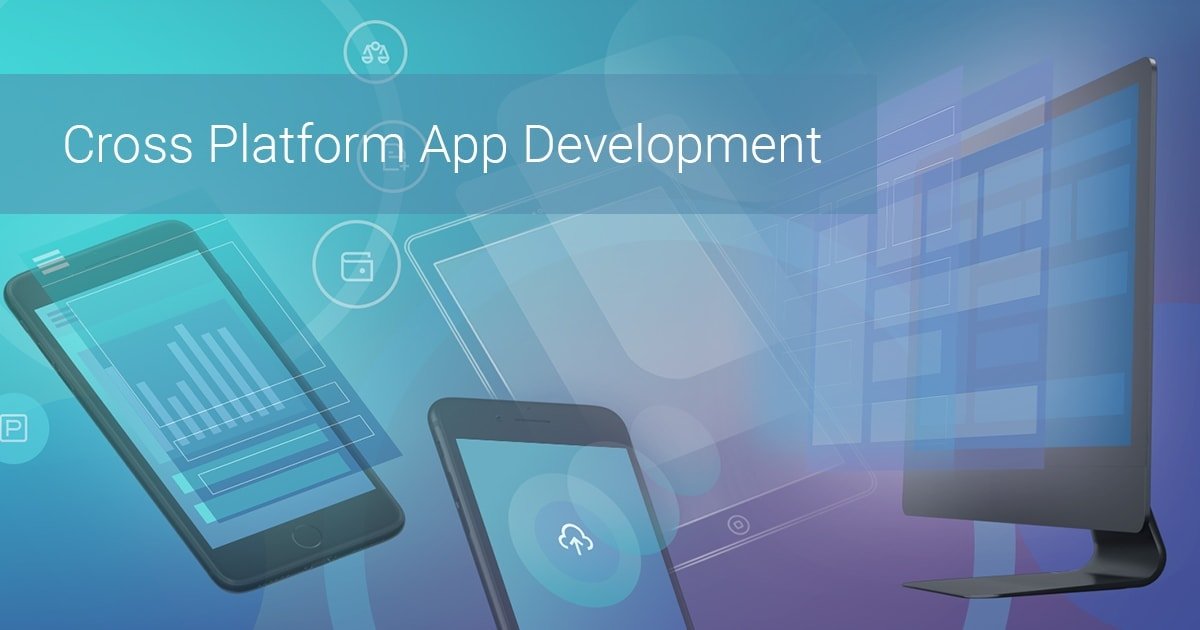Cross-Platform App Development Services

In today’s digital generation, mobile applications have evolve an essential part of our daily lives. Whether it’s reserving food, booking progress, or shopping online, mobile apps clarify several tasks, making them more reasonable and obtainable. With the growing need for mobile apps beyond different platforms, the requirement for efficient cross-platform app development services has also flowed.
Introduction to Cross-Platform App Development
In the empire of mobile application development, cross-platform app progress is a comprehensive technique. It requires creating mobile applications that move seamlessly across significant operating systems, such as iOS and Android, to appoint a single codebase.
Unlike traditional local app development techniques, which require separate codebases for respectively platform, cross-platform development offers an elegant and well-organized solution. By employing frameworks and tools customized for cross-platform development, developers can significantly decrease development time and evaluation while ensuring compatible performance and user experience across multiple platforms.

What is cross-platform app development?
Cross-platform app development adviser the project of creating mobile applications that can run on various operating systems, such as iOS and Android, and use a single code collection. Unlike traditional original app development, which requires unconnected codebases for individual platforms, cross-platform development recommends a more efficient and cost-effective approach.
Importance of cross-platform development services
Cross-platform development services are pivotal in authorizing businesses to reach a more comprehensive audience by ensuring that their apps are reachable across various devices and platforms. By utilizing cross-platform frameworks and tools, developers can up-to-date the app development process, decrease organize to market, and eventually increase the user experience.
Benefits of Cross-Platform App Development
Cross-platform app development offers cost-effectiveness, time-saving advantages, a conformable user experience across platforms, and an inclusive audience reach. It well-organizes development processes by utilizing a single codebase for multiple platforms, enhancing efficiency and reducing both time to market and overall development costs.

Cost-effectiveness
One key advantage of cross-platform app development is its cost-effectiveness. By writing code once and deploying it across considerable platforms, businesses can significantly reduce development costs analogized to building individual native apps for each platform.
Time-saving
Cross-platform development encourages developers to write code once and utilize it beyond significant platforms, saving time and achievement in the development process. This accelerated development cycle allows businesses to bring their apps to market faster, achieving a competitive edge in the ever-evolving app landscape.
Consistency across multiple platforms
Cross-platform development ensures a surface in the user experience across different platforms, maintaining a brand. Identity and usability regardless of the device or operating system used. This consistency helps build user trust and loyalty, leading to higher engagement and retention charges.
Wider audience reach
By selecting multiple outlets with a single codebase, cross-platform apps can reach a broader audience, maximizing the app’s undeveloped user base and market penetration. This wider reach translates to increased visibility, downloads, and revenue opportunities for businesses.
Popular Cross-Platform App Development Tools
These are software tools generally acquired by developers for generating mobile applications that can run on various operating systems with a single codebase. Examples include Xamarin, React Native, and Flutter, each presenting unique features and functionalities to up-to-date the cross-platform development process.

Xamarin
Xamarin is a popular cross-platform development framework allowed by Microsoft. It authorizes innovators to create local mobile apps using C# and . NET. With Xamarin, developers can compose code once and locate it across iOS, Android, and Windows platforms, exploiting shared libraries and APIs for maximum efficiency and code reuse.
React Native
React Native, developed by Facebook, is another generally used cross-platform framework for building local mobile apps that utilizes JavaScript and React. With React Native, developers can create high-performance, responsive apps that examine and detect like native applications while still being amused by the benefits of cross-platform development.
Flutter
Flutter, developed by Google, is an open-source UI toolkit for building natively arranged applications for mobile, web, and desktop from a single codebase. With Flutter’s fast development cycle and suggestive UI components, developers can create visually extraordinary and highly performant apps that run consistently across multiple platforms.
Factors to Consider When Selecting a Cross-Platform App Development Service
These are vital aspects that businesses and developers should consider when selecting a provider for cross-platform app development. Factors include performance, user interface capabilities, integration options, and community support. Considering these factors ensures optimal results and a smooth development process.
Performance
When selecting a cross-platform development service, performance is a critical factor to consider. Ensure that the chosen framework or tool can deliver fast, responsive, and reliable apps that meet the performance expectations of users.
User interface
The user interface plays a fundamental situation in the success of a mobile app. Choose a cross-platform development service that offers vital UI components—customization options to create reflexive and visually attractive user interfaces that enhance the overall user experience.
Integration capabilities
Integration with third-party services and APIs is essential for connecting advanced features and functionality to your app. Look for cross-platform development services that offer seamless combination capabilities, authorize developers to incorporate external services, and quickly enhance app functionality.
Community support
Community support is crucial when working with cross-platform development tools and structures. Choose a service with a thriving community of inventors who can provide guidance, support, and resources to help overcome challenges and proceed with the development operation.
Case Studies of Successful Cross-Platform Apps
These are real-world examples of mobile applications that have executed success through cross-platform development. Examining case studies such as Airbnb, UberEATS, and Walmart showcases how businesses attach cross-platform frameworks to create seamless and engaging user experiences beyond multiple platforms.

Airbnb
Airbnb, a leading online marketplace for sector and exploration experiences, utilizes React Native for its mobile app development. By exploiting React Native’s cross-platform capabilities, Airbnb provides an ideal and compatible user adventure to millions of users worldwide, regardless of their device or platform.
UberEATS
UberEATS, the food provider arm of ride-sharing giant Uber, awaits cross-platform development with Flutter. Flutter’s fast development cycle and customizable UI components authorize UberEATS to give an apparently extraordinary and high-performance app that provides the requirements of its global user base.
Walmart
Walmart, a multinational retail concern, uses Xamarin for its mobile app development. With Xamarin’s cross-platform capabilities, Walmart provides a combined shopping experience across iOS and Android devices, offering customers seamless access to its excellent product catalog and suitable shopping features.
Challenges and Limitations of Cross-Platform Development
These refer to obstacles and constraints faced by developers when utilizing cross-platform development approaches. Challenges may include:
- Performance issues.
- Limited access to native features.
- Dependencies on third-party frameworks.
Understanding these challenges is crucial for reducing risks and optimizing cross-platform app development projects.

Performance issues
While cross-platform development offers many benefits, it may also present performance challenges, mainly when dealing with complex or resource-concerted applications. Developers must optimize code and attachment platform-specific optimizations to ensure optimal performance across all platforms.
Limited access to native features
Cross-platform development frameworks may not every time provide access to all native features and functionalities offered by individual platforms. Developers may need to implement workarounds or utilize platform-specific code to access certain features, potentially increasing development complexity and maintenance overhead.
Dependency on third-party frameworks
Cross-platform app Development Services often depend on third-party frameworks and tools, which may introduce dependencies and compatibility matters. Developers must carefully assess and manage dependencies to ensure compatibility and maintainability throughout the app’s lifecycle.
Future Trends in Cross-Platform App Development
It pertains to upcoming advancements and innovations in cross-platform app development. Anticipated trends include enhancements in development frameworks, a combination of artificial intelligence, and the implementation of enhanced security measures. Staying informed about these directions is essential for staying competitive in the evolving mobile app landscape.
Advancements in frameworks
Cross-platform development frameworks continue to develop and improve with advancements in performance, features, and development services tools. Future trends may include enhanced support for appear technologies, such as increased reality and virtual reality. As well as more excellent combinations with cloud services and artificial intelligence (AI) capabilities.
Integration of artificial intelligence
Artificial intelligence will play a significant part in the future of cross-platform app development. It will qualify intelligent features such as personalized recommendations, prophetical analytics, and essential language processing. Developers can use AI-powered tools and services to increase app functionality and provide more captivating and pleasant user experiences.
Enhanced security measures
As mobile apps become step-by-step interconnected and data-operate, robust security measures are of the most significant importance. Future trends in cross-platform app development may center on combining the latest security features, such as biostatistics verification, encryption, and secure data communication, to safeguard user privacy and guidance.
Conclusion
Cross-platform app development services suggest a cost-effective and well-organized proceed towards the construction of mobile applications that run ideally over multiple platforms. By manipulating cross-platform frameworks and tools, businesses can up to date the development process, extend a wider audience, and deliver compatible user experiences across various devices and operating systems. In spite of some challenges and limitations, the future of cross-platform app development looks promising, with in progress advancements in frameworks. A combination of artificial intelligence and enhanced security measures operating innovation and growth in the industry.
FAQs
What are the advantages of cross-platform app development?
Cross-platform app development provides advantages such as cost-effectiveness, time savings, regularity across different platforms, and a broader congress reach.
Which are some popular cross-platform app development tools?
Some popular cross-platform app progress tools incorporate Xamarin, React Native, and Flutter.
What factors should be considered when choosing a cross-platform development service?
Factors to consider include performance, user interface, integration capabilities, and community support.
What are some future trends in cross-platform app development?
Future trends include advancements in frameworks, integration of artificial intelligence, and enhanced security measures.








